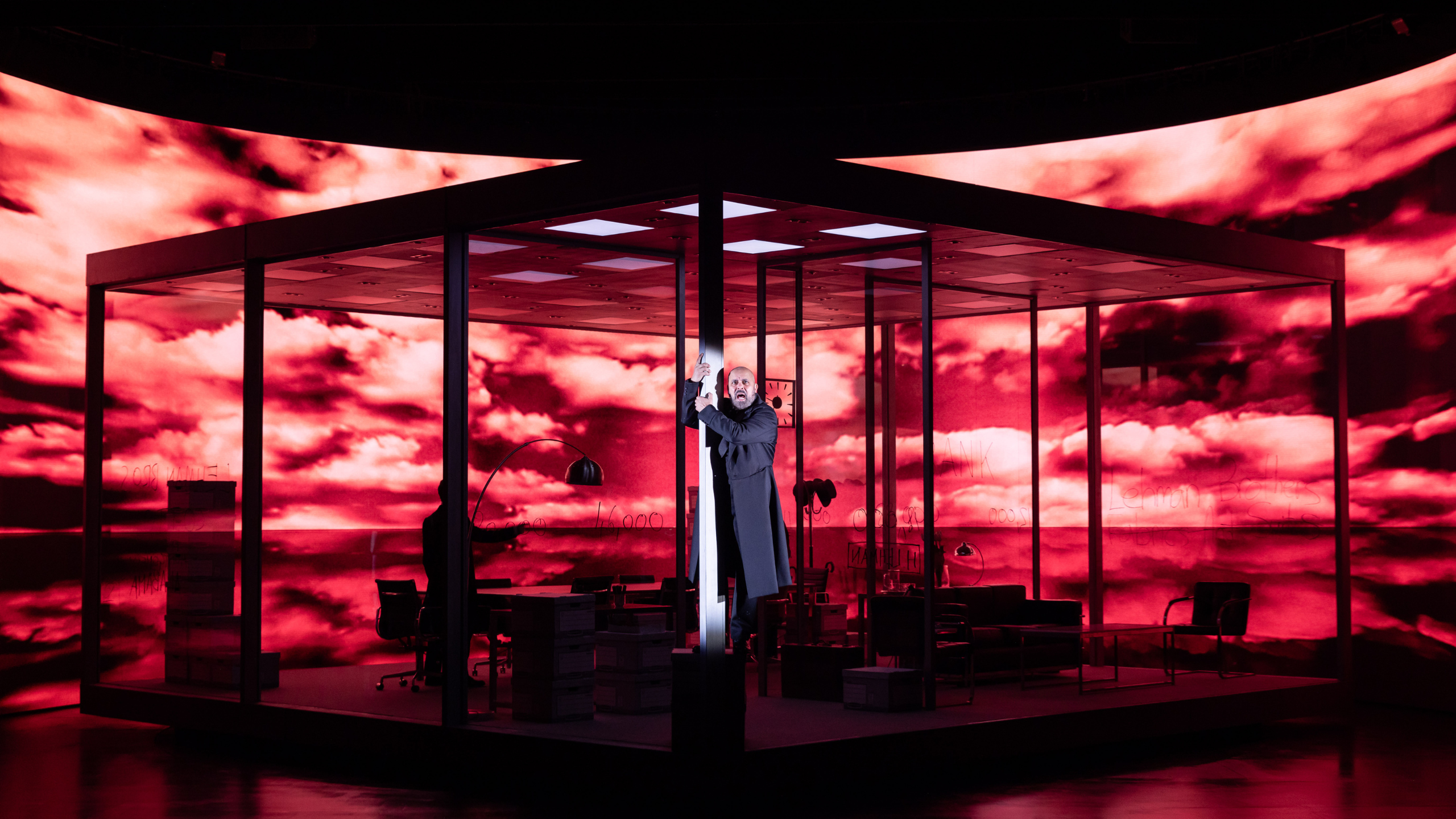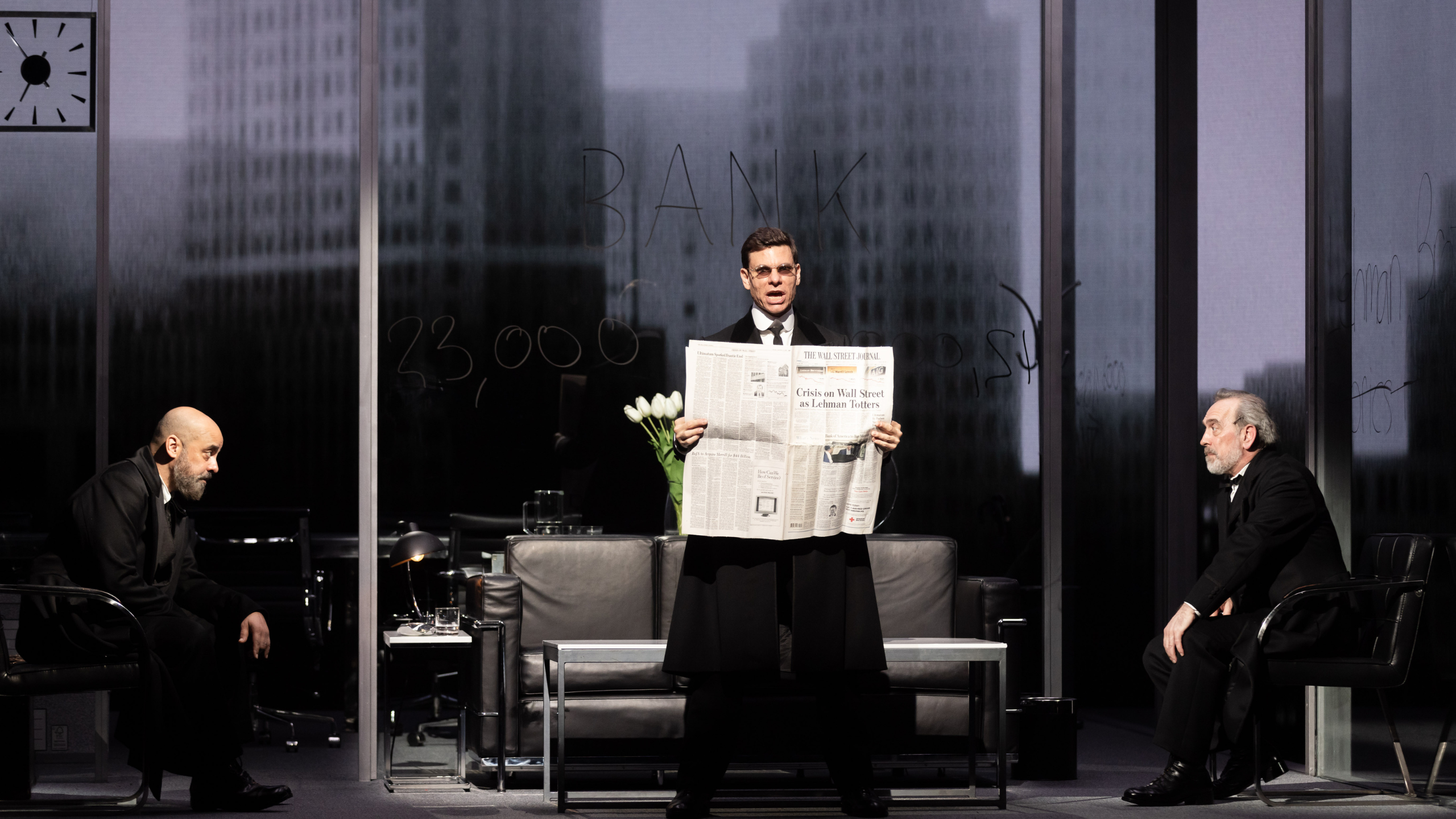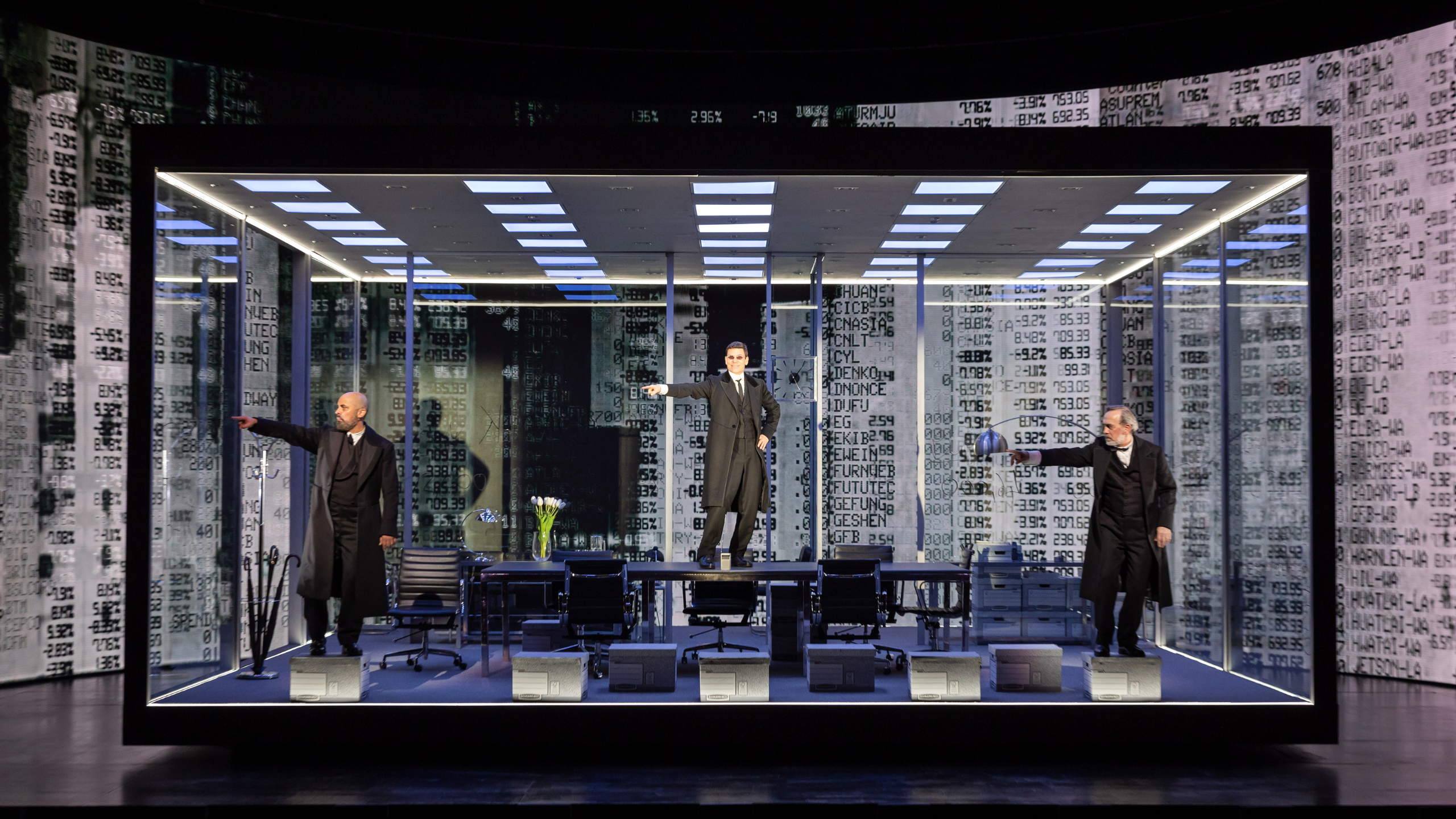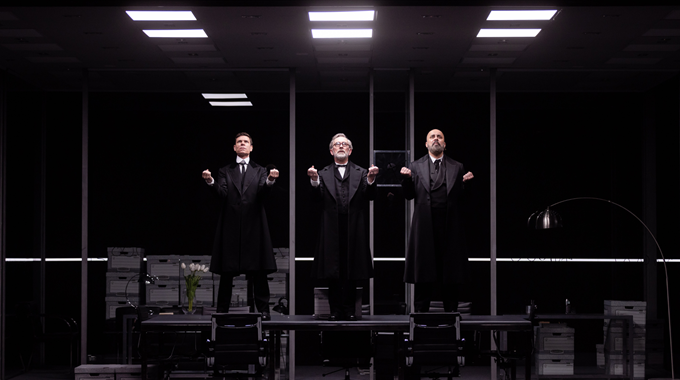On paper, it sounds impossible. In three acts, and three hours, three men play more than 70 characters and tell the story of world capitalism through the prism of a collapsing family business. On stage, The Lehman Trilogy is a sensation, a history lesson, a family saga and an astonishing theatrical conjuring trick that brings cheering audiences to their feet.
The story begins at the end, in an empty office full of cardboard boxes, after the collapse in 2008 of the mighty Lehman Brothers, the bank thought to be too big to be allowed to fail. It was the largest bankruptcy in American history and in its wake, it triggered the World Financial Crisis. Although Australia avoided much of the fallout, these seismic events have shaped the global economy ever since.
But the genius of The Lehman Trilogy is that it roots these economic shockwaves in the deeply human story of Henry, Emanuel and Mayer, three immigrant brothers who come from Rimpar, Bavaria, to make their way in the “magical music box called America.” As the play charts their journey from the fabric store Henry founded in 1844 in Montgomery, Alabama through the Wall Street crash of 1929, to dominance in World War Two and ultimate disaster, it also tells the story of a family and the changing country in which they live.

It does this through the performances of three actors – Aaron Krohn, Howard W Overshown and Adrian Schiller - who embody not only successive generations of the Lehman’s, but also plantation owners, city tycoons, rabbis, lovers, wives, slipping between the characters with the help of a changed voice, an upturned collar, a nod of the head, a tiny hand gesture.
They are supported by Luke Halls’ video designs, which shift the landscapes behind Es Devlin’s versatile glass cube of a set, and by piano music composed by Nick Powell, and played live by Cat Beveridge. But essentially, they are engaged in an act of theatrical transformation, weaving a vast myth-like narrative from the simplest of means. There is exuberance and depth to the magic spell they cast.
It wasn’t always like this. Stefano Massini’s original play, seen in Italy in 2015, it ran to some 200 pages and wasn’t broken up into characters or dialogue. More like a poem than a drama, it had nevertheless been seen in different productions around Europe. One lasted five hours, all featured large casts.
When director Sam Mendes and writer Ben Powell first began working on an English-language adaptation their first workshop, which used a literal English translation, brought together in 15 actors, and resulted in – according to Simon Russell Beale who first played Henry – “some really bad mime.” Gradually, as Power refined the script and the concept with the help of the original cast of Russell Beale, Ben Miles and Adam Godley, it became clear that less was more, that the play would work best boiled down to a trio of actors. The services of a tightrope walker, who featured on the original poster, were also deemed surplus to requirements.

Mendes said later: “I felt that to make the three original brothers tell the whole story would be an amazing way of binding together what could have been too unwieldy a script. But it couldn’t just be a gimmick. It had to work to pull the whole thing into a dramatically coherent whole.” The year after The Lehman Trilogy opened, Mendes began work on 1917, a movie that appears to unfold in a single take. The two works reveal the same sense of cinematic precision; sophistication behind the scenes translates into an apparently simple narrative sweep of great clarity and flair.
It was all part of Mendes’s evolution as a director. As he explained: “There’s a great line in Christopher Marlowe about ‘infinite riches in a little room’ and I use the same line about theatre. It has an intense ability to communicate.”
From the moment of its premiere on 12 July 2018 at London’s National Theatre, The Lehman Trilogy was a hit, following its first successful run with an equally successful West End transfer. It transferred to the Park Avenue Armory in New York in 2019, returning to Broadway in 2020, after the Covid-enforced shutdown and winning five Tony awards, including the prize for best play.
It strikes such a chord because as the epic tale unfolds, describing the shift from a bank that invests in people and real things to a trading house that deals only in the movement of money, it explains exactly how banking and the markets reached a point where the average man or woman in the street no longer exactly knows where their money is or how it works. But it does so in the most emotional and engrossing ways, by showing how this shift affects the values of the people around it.

As Power remarked in an interview: “We can see ourselves and our families in these people,” he said. “The play explores where hubris and ambition meet, at what point wrong decisions are taken, and where the build to 2008 begins. But it does it in a really human way….It’s interested in the people and the ideas behind the financial models, rather than the systems themselves.”
It records great societal change. The phrase “everything changed again” runs through it like a refrain; events are repeated in different forms. For example, as religion ebbs from the family’s lives, a week of respect for Henry after his death from yellow fever in 1855, becomes three minutes of silence for his great nephew Bobbie in 1969. The poetic strength of the writing is underpinned by every aspect of the production. Music and design are integral to the storytelling.
Most of the play unfolds in monochrome, in the black coats of the brothers, in the greys and white of the design. But Jon Clark’s lighting illuminates their nightmares with shafts of colour, emphasising the way that their pursuit of the American dream of success is distorted by the ebbing of their personal morality. In a similar way, Powell’s score begins with the echoes of a popular Yiddish lullaby, the kind of song a Jewish immigrant might have heard on his mother’s knee. By the final act, the music has become more hallucinatory and uncontrolled, before returning to the same quiet lullaby at the end.
The Lehman Trilogy is bound together by this singular attention to detail. In telling the panoramic history of the fraying of a certain type of American capitalism, it asks huge questions about the point we have reached, the price we have paid, and whether it has been worth paying. Above all it tells a family saga we can all relate to – full of tears and laughter, loves and hates, triumphs and disasters. All with three actors on a stage.


